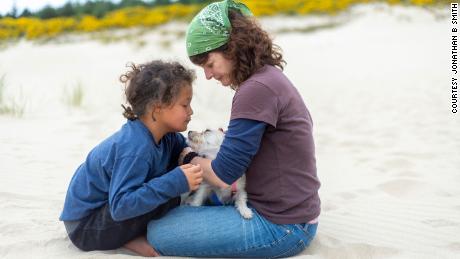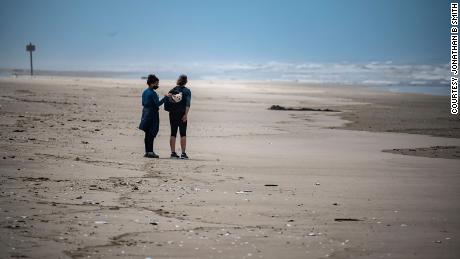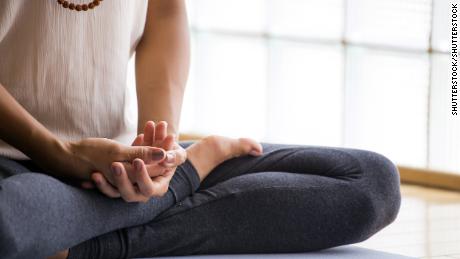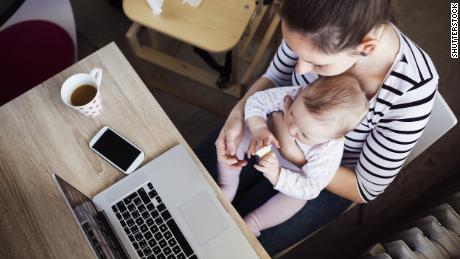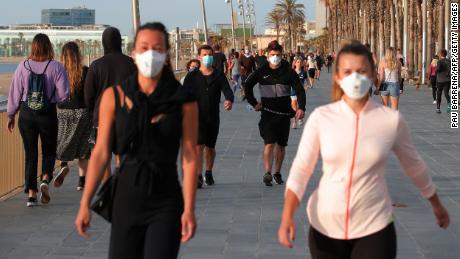(CNN)I adopted my daughter from foster care. It took a specialized village to help her succeed.
The day our daughter toddled around a corner of her foster mother's house in a peach pantsuit and flashed my husband and me a mischievous grin, we knew we were her parents.
We also knew we had made the right choice in adopting her from our state foster care system. What we didn't know was how much we'd rely on medical professionals, educators and mentors over the next 13 years to raise her.
She'd had a rough start in life. Relinquished at birth to the state, she spent her first 18 months in a foster home with three other children her age. The repercussions of too-little eye contact and too-little cuddling in that critical first year of life didn't surface until she entered first grade, when she suffered from separation anxiety so severe that we finally pulled her out of the classroom and found her a pediatric psychologist and alternative schooling.
Longing for love
All kids have special needs, and we learned the most important work we'd do was learning how best to meet them.
More than 120,000 foster children across the United States are waiting for a permanent home at any given time, according to AdoptUSKids, a national project that matches foster kids with adoptive families. They range in age from infants to 21-year-olds about to age out of the system -- all permanently relinquished by birth parents and longing for love and stability.
Stigmas against this demographic run deep. Potential parents worry about the emotional effects of neglect and trauma, about babies born addicted to drugs, and how to maintain relationships with a child's biological family members as recommended by the US Department of Health and Human Services.
Thirteen years ago, my husband and I were two of those anxious adults. Then an adoptive dad did a presentation in one of our foster care parenting classes.
"Sure, my kid was born exposed to drugs and needed some help," he said, "but she's also a soccer player and a straight-A student."
What he didn't say was what type of help a child adopted from the foster system often needs, and we didn't think to ask.
The importance of trauma-aware caregiving
.
Infants bond with their caregivers through breast- or bottle-feeding while being held with loving eye contact, according to a 2016 study in the London Journal of Primary Care. Without this constant building of attachment to at least one adult who's devoted to meeting their physical and emotional needs, a baby's brain can start operating in "fight-or-flight" mode, according to the American Academy of Pediatrics.
It's the same for older kids who've dealt with neglect and abuse in their home. Kids exposed to early childhood trauma develop post-traumatic stress disorder, according to a 2020 study in the British Medical Journal. They begin to perceive a trip to the doctor's office or a six-hour school day as a threat to their very existence.
We didn't see that at first. At 19 months, our daughter responded to every new location and experience with one hand outstretched for a high-five from strangers.
When she entered first grade, her attitude changed. Suddenly, she hid under her desk and screamed if anyone came near her. She refused to sit still for classwork, and she yelled at me when I picked her up from school. Her anxiety increased in direct proportion to the hours she was away from home. Peers began to shun her, confused by her behavior. She spent time in the principal's office -- a lot of time. She grew deeply depressed.
"I feel like a broken lightbulb," she once told me in tears. She was 7.
We didn't know until later that she was reacting to being separated from her mother at birth, and then losing her foster mother 19 months later -- and that she was terrified that she'd lose my husband and me, as well.
Caregivers must apply a trauma-aware lens to child behaviors in order to determine what's working and what isn't, both at home and in the classroom, said Kendra Morris-Jacobson, Director of Oregon Programs at the Oregon Post Adoption Resource Center.
"Kids have to feel safe in order to learn. It's our job as adults to create those regulating environments, particularly for children who have experienced the traumas associated with time in the child welfare system," she explained. "Creating an environment that is responsive to a child's capacity and helps them stay regulated is paramount. What this looks like differs for every child."
Flexibility and creativity are key
After two years of public school not working for my daughter, homeschooling in third and fourth grades became what a safe and therapeutic environment looked like for her. I changed jobs and shifted my work schedule so I could spend days with her. We focused on academics half an hour at a time, interspersing hikes and bike rides and dance and gymnastics classes. She saw a therapist weekly and learned techniques to calm her body and her mind.
Those were not easy years, but they were incredibly rewarding. My daughter and I read novels together reflecting her experiences as a Black, bi-racial adopted kid with classroom anxiety and a passion for animals and dancing. We adopted a terrier, two cats and five chickens, whom she adored. I figured out the ways she learned best -- through videos and stories, with hands-on manipulatives like flash cards and math counting-blocks.
The therapist eventually diagnosed her with ADHD. We learned how to help her stay organized, and she returned to school in fifth grade as one of the top readers in her class, with a learning accommodation for math. To help her form lasting friendships, I volunteered to coach a team for the statewide "book battle." She and her classmates read a total of 16 books and competed with their peers in a literary trivia contest at both the local and state levels.
Open adoption offers healing and connection
Throughout those years, we got to know her birth sisters and grandmother, sharing holidays and sleepovers and vacations. We encouraged our daughter to ask them, and us, about her family of origin and express her emotions about her birth story.
As we learned, adoptive parents need to listen attentively to children's stories about their family of origin and validate the accompanying emotions, says John DeGarmo, founder and director of The Foster Care Institute in Georgia. He's father to six children, three of them adopted from the state.
"Be cognizant of the roles that grief and loss play in the life of any child permanently relinquished by birth parents," he says. "The internal process for all involved can be a challenging one, especially for your child."
He believes that while open adoption isn't the right choice for every family, it benefits many kids because they're able to maintain connections with important people in their lives through email, phone calls and/or in-person visits.
"This contact permits them to resolve feelings of loss," he said, "and it gives them access to information they might seek later on in life."
While my daughter's birth parents aren't yet able to spend time with her, she texts and emails with her sisters. Some of their family members come from Central America, and we took her to visit the region so that she could better understand her culture and her history. We joined a local chapter of the NAACP, got her involved with a peer group there, and found mentors of color at a dance studio with a social justice focus. She's busy and happy.
This is not to say that we don't, as a family, hit periodic rough patches. Mother's Day is a trigger for our daughter. So is her birthday. But we've learned coping mechanisms -- her favorite TV show and her favorite chocolate cake on the couch with us and the terrier. She's become resilient.
Get CNN Health's weekly newsletter
Sign up here to get The Results Are In with Dr. Sanjay Gupta every Tuesday from the CNN Health team.
It takes a village to raise any child, and it takes particular types of villagers to raise a child from the foster care system. Our daughter is surrounded and supported by the caregivers and mentors we've found for her over the years -- loving neighbors, devoted teachers, insightful medical professionals, loyal friends.
Our daughter is now 14. She's grown into a friendly and confident eighth-grader preparing for high school, where she'll join the dance company with dreams of becoming a physical therapist for kids with disabilities. The other night, she came home from three hours of jazz and tap and picked up her cat before performing an exuberant hip hop routine for my husband and me. On her face, the same mischievous grin that captivated us all those years ago.
She's OK, this kid. We've all got her back.

